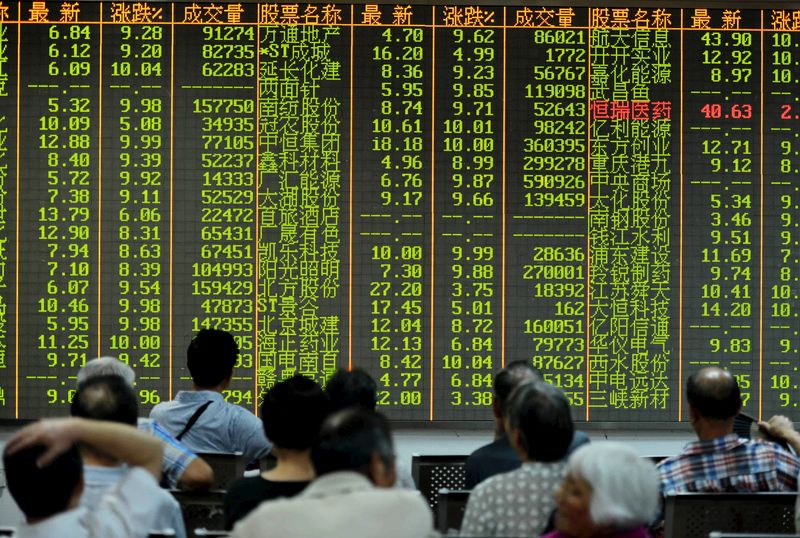Uxin shares drop 45% as predicted by InvestingPro’s Fair Value model
Investing.com -- Chinese equities have drawn a wave of inflows this summer, with both retail and institutional investors stepping up exposure as sentiment improved, according to UBS.
Retail participation has strengthened alongside the rally. A-share daily turnover in August rose to RMB1.95 trillion, compared with RMB1.63 trillion in July, and surged to RMB2.8 trillion on August 18, the third highest on record.
“The A-share balance of margin financing has been climbing since 4 July, reaching RMB2.05trn as of 15 August -- this shows leveraged investors are bullish about future market performance,” UBS strategists led by Lei Meng said in a report.
The number of new A-share investors in July was estimated at 1.11 million, up 71% year-on-year, though still well below the October 2024 peak of 3.8 million.
Fund inflows are also accelerating. Equity mutual funds have delivered a 17% return year-to-date, reversing years of underperformance, and new issuances are running above last year’s averages.
Still, mutual funds’ A-share holdings increased by just RMB145.6 billion in the first half. UBS estimates they will need to raise positions by at least RMB590 billion in 2025 to meet policy targets for medium- and long-term fund participation.
Insurers are also buying, with their equity investments reaching RMB4.7 trillion at the end of the second quarter, up RMB622.3 billion from the end of 2024.
UBS expects inflows from insurers into stocks to continue through the second half, supported by policy initiatives that could drive RMB1 trillion into the market this year.
The state-backed “national team” has provided another source of demand. Central Huijin disclosed in April that it had boosted ETF holdings and pledged to act as a “quasi-stabilisation fund.”
UBS estimates Huijin purchased more than RMB200 billion of A-share ETFs in the second quarter, with about 65% flowing into CSI 300 products.
From a macro perspective, households still hold over RMB7.2 trillion in excess savings since 2020, while the widening M1–M2 gap signals stronger liquidity.
At the same time, a “seesaw effect” between stocks and bonds has driven bond fund net asset values lower, indirectly pushing more flows toward equities.
